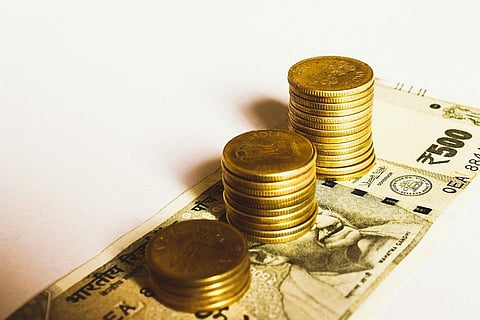

Moody's Investor Service on Thursday revised the contraction rate of India's FY21 GDP to (-) 10.6% from an earlier estimate of (-) 11.5%. The revision comes days after the Centre announced new stimulus measures. Besides, Moody's revised the forecast for the next financial year ending March 2022. It now estimates a growth of 10.8% from a rise of 10.6%, which was predicted earlier.
"The latest measures (stimulus) aim to increase the competitiveness of India's manufacturing sector and create jobs, while supporting infrastructure investment, credit availability and stressed sectors," Moody's said. "As such, they present potential upside to our current growth forecasts, a credit positive."
According to the ratings agency, consumer confidence in India remains relatively low amid a continued elevated number of daily new coronavirus cases, "although this has come down from a peak in September".
"Stronger nominal GDP growth over the medium term would make it easier for India's government to address its weak fiscal position, which the coronavirus has exacerbated; we forecast government debt to increase to 89.3% of GDP in fiscal 2020 and decline to 87.5% in fiscal 2021, from an already elevated 72.2% in fiscal 2019," Moody's said.
"By contrast, we forecast the median for Baa-rated peers to rise to 60.8% in 2020. The country's mixed track record on revenue-raising measures lowers prospects for fiscal policy-driven budget consolidation. A sustained increase in GDP growth would therefore likely be a major driver of any durable future fiscal consolidation."
Accordingly, the global ratings agency expects the general government fiscal deficit to remain wide, reaching around 12% of GDP, with some upside risk, in fiscal 2020 and narrowing to about 7% of GDP over the medium term, still above the deficit of 6.5% of GDP in 2019.
Meanwhile, ratings agency ICRA said that the year-on-year contraction in India's GDP is expected to narrow appreciably to (-) 9.5% in Q2FY21 from (-) 23.9% in Q1. Similarly, the contraction in the gross value added (GVA) at basic prices is expected to have moderated considerably to (-) 8.5% in Q2FY21 from (-) 22.8% in Q1FY21, led by industry and services.
According to Aditi Nayar, Principal Economist, ICRA, "A substantial recovery in manufacturing and construction is likely to underpin the expected improvement in the performance of the industrial GVA in Q2 FY2021. Various sectors of manufacturing recorded an improvement in demand and volumes in Q2 FY2021, although the performance was admittedly uneven."
"In addition to the continued cost-cutting measures, the availability of raw material inventory that had been procured previously at subdued costs, supported the earnings of the manufacturing entities in the just-concluded quarter relative to Q1 FY2021. We expect the contraction in manufacturing GVA to narrow considerably to around 10% in Q2 FY2021 from 39.3% in Q1 FY2021."
Nevertheless, she pointed out the extent of the recovery in the performance of the informal sectors in Q2FY21 remains unclear
Furthermore, Moody’s cited that new measures by the union government target manufacturing competitiveness.
The latest package follows the Rs 467 billion (0.2% of GDP) of stimulus announced in October and close to Rs 2 trillion (1% of GDP) of direct spending allocated in the government's first stimulus package in May.
The government expects that no new borrowing will be required to fund the additional spending.
Among the new measures, the government has allocated Rs 1.5 trillion to extend the Production Linked Incentive (PLI) scheme across a further 10 sectors, including automotive and advance cell chemistry manufacturers.
Under the scheme, manufacturers in key sectors will receive incentives in the form of direct payments over five years.
The scheme aims to increase the competitiveness of India's manufacturing sector, potentially reviving private investment, where year-on-year growth has been trending downward since the second quarter of 2018.